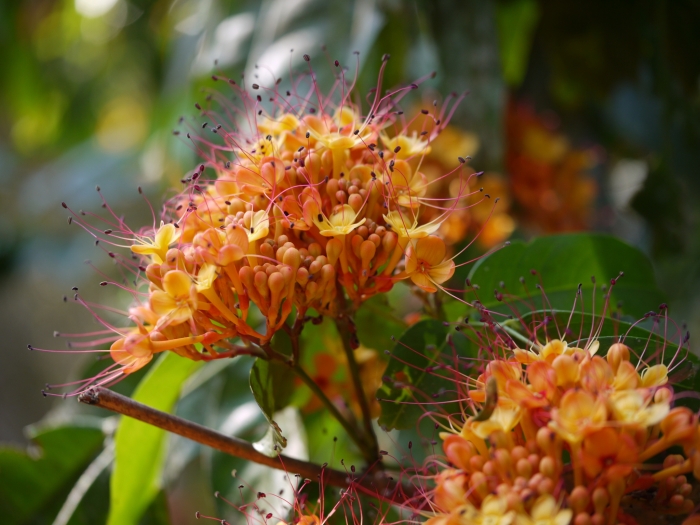Ashoka Tree
(Saraca asoca)
Ashoka Tree (Saraca asoca)
/
/

© Dinesh Valke
CC BY-SA 4.0
Image By:
© Dinesh Valke
Recorded By:
Copyright:
CC BY-SA 4.0
Copyright Notice:
Photo by: © Dinesh Valke | License Type: CC BY-SA 4.0 | License URL: http://creativecommons.org/licenses/by-sa/4.0/ | Uploader: dineshvalke | Publisher: iNaturalist |

























Estimated Native Range
Summary
Saraca asoca, commonly known as the Ashoka tree, is an evergreen tree native to the Indian subcontinent, specifically the moist deciduous forests and along streams in the lower Himalayas, Eastern Ghats, and on the Deccan plateau. It typically grows to a height of 15-20 feet (4.5-6 meters) with a spreading, umbrella-like canopy that provides a dense shade. The Ashoka tree is renowned for its lush foliage of deep green leaves arranged spirally on the branches and its vibrant orange-yellow flowers, which bloom in heavy, lush bunches from February to April. The flowers are highly valued for their ornamental quality and turn red before wilting, adding a splash of color to the landscape.
The Ashoka tree is celebrated for its beautiful and fragrant flowers, which are traditionally used for festive decorations in India. It is also planted as an ornamental tree in gardens and parks, appreciated for its shade and aesthetic appeal. In cultivation, it requires moist, well-drained soil and thrives in full sun to partial shade. While it is relatively low-maintenance, it does need protection from frost. The tree has notable medicinal uses; its bark, rich in tannins and catechol, is used in Ayurvedic medicine to prepare asokarista. However, gardeners should be aware that the tree can be susceptible to pests such as mealybugs and scale insects.CC BY-SA 4.0
The Ashoka tree is celebrated for its beautiful and fragrant flowers, which are traditionally used for festive decorations in India. It is also planted as an ornamental tree in gardens and parks, appreciated for its shade and aesthetic appeal. In cultivation, it requires moist, well-drained soil and thrives in full sun to partial shade. While it is relatively low-maintenance, it does need protection from frost. The tree has notable medicinal uses; its bark, rich in tannins and catechol, is used in Ayurvedic medicine to prepare asokarista. However, gardeners should be aware that the tree can be susceptible to pests such as mealybugs and scale insects.CC BY-SA 4.0
Plant Description
- Plant Type: Tree
- Height: 20-30 feet
- Width: 10-15 feet
- Growth Rate: Moderate
- Flower Color: Red
- Flowering Season: Spring
- Leaf Retention: Evergreen
Growth Requirements
- Sun: Full Sun, Part Shade
- Water: Medium
- Drainage: Medium, Fast
Common Uses
Bee Garden, Bird Garden, Butterfly Garden, Fragrant, Low Maintenance, Potted Plant, Showy Flowers
Natural Habitat
Moist deciduous forests, lower Himalayan streams, and Eastern Ghats
Other Names
Common Names: Sorrowless Tree, Ashoka, Asoka-Tree, Ashoka Tree
Scientific Names: , Saraca asoca, Jonesia asoca, Jonesia confusa, SH1511091.08FU, Saraca asoca, Saraca asoca, Saraca confusa, Saraca indica,
GBIF Accepted Name: